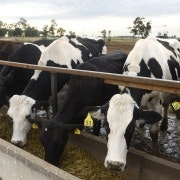A jack of all trades but a Masters of none?
Ralph Waters made what seemed like a reasonable defence of Woolworths’ foray into the hardware sector at today’s annual meeting, asking for patience as Woolworths and its US joint venture partner Lowe’s continue to roll out Masters stores in a five-year strategy.
The Woolworths chairman told shareholders that Masters would break even or even make a profit in 2016, and that they should look to the group’s record in building new businesses.
He also made the point that the joint venture was building the business from scratch. Losses now being incurred were akin to the creation of the hundreds of millions of dollars of goodwill they would have had to pay to acquire an existing business, had there been one available.
With only 36 stores open out of the 90 that Woolworths expects to have trading by the end of 2016, the performance of the network today doesn’t provide much of a guide to what the economics will look like once it achieves critical mass and is able to scale distribution and supply chain costs across the network.
It is also quite reasonable to argue that, with regulators and politicians looking to crimp the growth of the two major supermarket chains in their core food and liquor markets, that searching for growth would inevitably involve the risk of entering new markets.
The hardware and home improvement sector is a $42 billion-a-year market. With Bunnings only holding a 16 per cent share, the logic of targeting it is quite rational.
The problem for Waters and his chief executive Grant O’Brien isn’t that the strategy is inherently flawed. Rather, it’s that the execution so far has been unusually sloppy.
Earlier this year, Woolworths revealed (under pressure from the market) that Masters, budgeted to lose $119 million last financial year, had actually lost $157 million. Similarly, the associated Danks business, budgeted to make $38 million, had lost $18 million. Woolworths admitted that when it framed the budgets, it didn’t know much about the hardware business.
Among the concession it made was that it hadn’t understood the ‘seasonal curve’, or taken into account the fact that seasons in this hemisphere are different to those Lowe’s experiences in the northern hemisphere.
It had been overly optimistic on sales budgets, wage costs and margins, which were lower than expected because of the sales mix. Woolworths has forecast that the hardware businesses will lose roughly the same this year as the $139 million they lost last year.
While Waters’ plea for patience was valid, those early stumbles and the revelation that the joint venture had got the basics of hardware retailing wrong have unsettled the market. It has caused analysts and fund managers to ponder whether Masters can be a sustainable business.
Part of the problem Woolworths faces is that the Wesfarmers-owned Bunnings didn’t make the same mistake that it did when Ian McLeod and his team began the renaissance of Coles. Woolworths chose to protect its own margins and profitability rather than ratchet up the pressure on Coles, which enabled Coles to generate self-fuelling momentum and escape its point of maximum vulnerability.
Bunnings’ John Gillam acted pre-emptively, accelerating his property purchases and new store openings and fine-tuning the Bunnings offer in anticipation that the Masters format would borrow from Lowe’s US business.
There was some cost in terms of profit and margin growth and returns on capital, but Bunnings was in good shape to meet the new competition and is now recycling capital and lifting its returns.
But by trying to emulate the Lowe’s model to differentiate itself from Bunnings, Woolworths and Lowe’s have created an offer that won’t sustain their ambitions.
Masters stores are pitched as a premium offering compared to Bunnings, with more visually appealing layouts and lower stock densities. Like Lowe’s, the stores have a bigger emphasis on low-margin whitegoods and other homewares.
They are more expensive stores than Bunnings and would require higher turnovers per store to match Bunnings’ profitability. But they aren’t necessarily the kind of stores that would attract tradespeople and hard-core DIY handymen who frequent Bunnings.
Moreover, because it was a new entrant entering the sector in such a big way, Masters went out on a massive land grab to support an eventual 150-store network. The underlying properties wouldn’t have been cheap. Some of them wouldn’t be in the best of locations or where planning approvals and construction would be seamless.
Woolworths does have a lot of very smart and experienced retailers in its ranks. One would expect that some of the more obvious mistakes it made in the planning and initial roll-out phases will have been addressed. It will have taken out some costs and adjusted its sales mix to improve its margins.
But the jury is out on the question of whether the core retail strategy and the extent of the capital commitment to the underlying properties and stores will remain a continuing drag on Masters’ performance.
Lowe’s had an option to put its one-third interest in Masters, which was extended earlier this year to October next year. Waters said today that the joint venture was solid and Lowe’s involvement was a real advantage to Woolworths. The fate of the option will eventually provide some insight into how Lowe’s is thinking about how the venture is tracking.
With analysts deducing from Lowe’s quarterly filings that the losses this financial year-to-date have accelerated, there will be pressure on O’Brien and his team to bring Masters’ losses for the full year below those incurred last year.
O’Brien has reinvigorated Woolworths’ core food and liquor businesses and shouldn’t be underestimated. But establishing a new business as ambitious as Masters against a formidable competitor is a high-stakes and high-risk play. The market isn’t going to wait five years to come to its own conclusions about whether or not it can succeed.
















